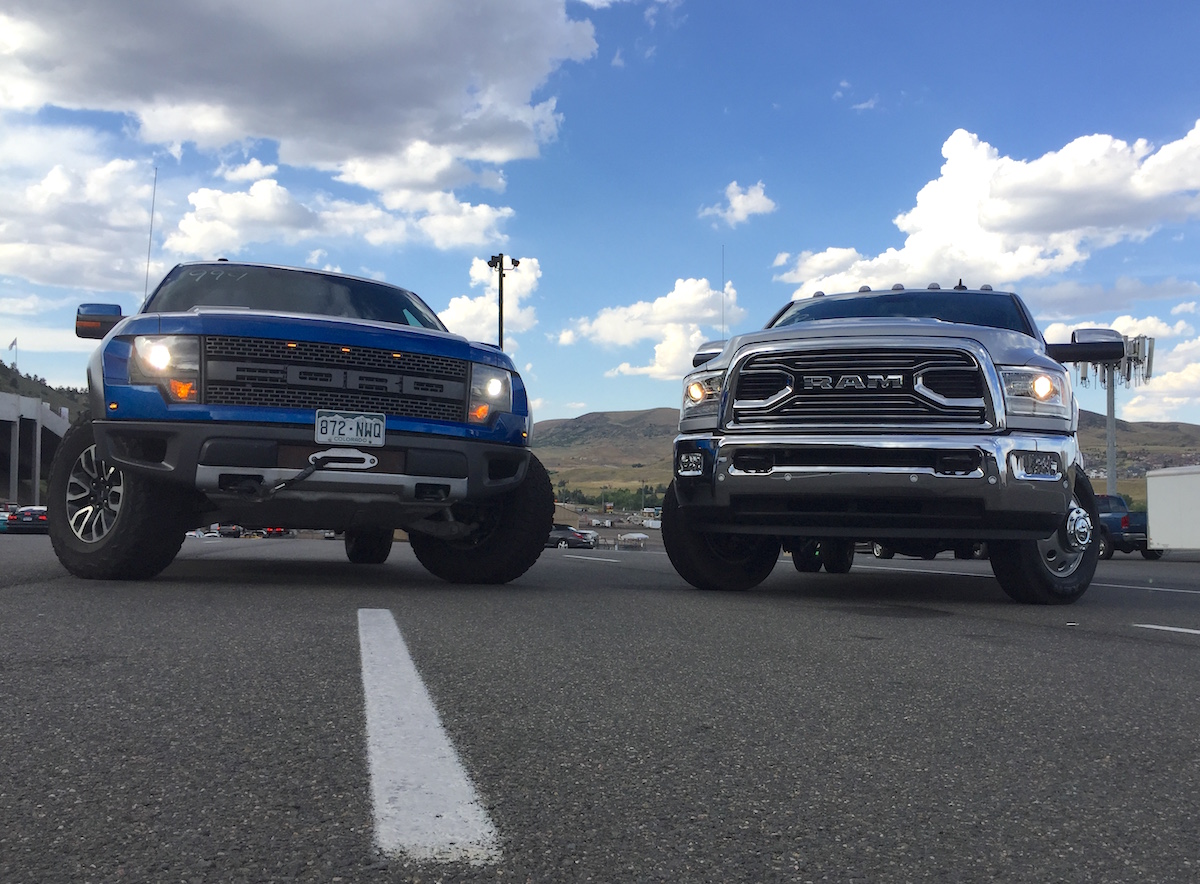
Writing and Photos: Ben Schamberger, South African TFL correspondent
You may have heard and perhaps watched videos of the Mahindra Roxor on TFLoffroad. It’s a sort of Willys-inspired side-by-side made by an Indian company. They are fun, but I didn’t buy a Roxor. Instead, I went for one of its bigger siblings: the Mahindra Pik-Up S10.
As a young man with three children, two dogs and a soon-to-be wife, the decision to purchase a new vehicle presented some challenges. I had some very specific needs that I was not willing to compromise on.
The vehicle had to be new. I wanted the peace of mind offered by a good maintenance plan and a similarly good warranty. It had to be tough – and I mean tough. Eight-year-old twins and two dogs are a messy combination that can lead to premature damage and ageing. It had to be a four-wheel drive vehicle. No low range? No deal. Also, it had to be as fuel efficient as possible. Gasoline and diesel prices in South Africa are constantly rising. My salary, as of writing this piece, has remained remarkably stable. That leads me to the last requirement: It had to be cheap. Yes, I do realize that new, 4×4, size and fuel economy are not often synonymous with “thrifty”. But I was open-minded enough to look outside the boundaries of the more popular brands.
The Pik-Up (no, I did not misspell it) is a midsize truck that sits in the same class as the Ford Ranger and Toyota Hilux. It’s based on the Mahindra Scorpio, a well-known ladder-on-frame SUV that has roamed the Indian landscape for nearly two decades. It’s been available here in South Africa for a decade or so and has been slowly, yet steadily attracting more and more buyers. The reason for its growing success? Price.
The truck, in its base 2WD, long bed/single cab configuration retails for the equivalent of $13,500 USD. This is very attractive considering that a base Ford Ranger starts off much more expensive, at $20,645. The Hilux, the market leader, starts at $18,870. However, due to the dealership offering me an attractive discount on the top spec model, the S10 Karoo Edition, I decided to go ahead and sign the deal.

The Mahindra Pik-Up is an odd-looking truck
The Pik-Up’s looks are polarizing, to say the least. The front fascia is quite modern, sporting large halogen headlights topped by LED daylight running lights. Those LED lights are shaped like groomed eyebrows, which adds a somewhat feminine look that defeats any attempt at making the rest of the Pik-Up look menacing. I wouldn’t call it a failed attempt at good aesthetics, but it oozes a “we tried our best” sort of look. This is even more obvious when looking at the rear. The rear lights have not changed since the first Pik-Up generation and it’s obvious, given how tiny they are compared to the rest of the truck.

The fit and finish is a mixed bag. It’s panel-gap galore – but in a “I wasn’t built for that” kind of way. It’s easy to forgive Mahindra for it once you slam the driver’s door and realize that you have entered a tank, not a Ford Fiesta. Everything from the door hinges, the hood, the rock sliders, the bed and the windows inspire toughness. I discovered this when, during a 4×4 excursion, I dragged the rear bumper over a rock and upon apprehensive examination I realized that it was indeed solid steel and not plastic. Needless to say, it rolled away with a couple of scratches and no panel warping. It’s easy to see why these vehicles are the preferred tools in coal mines, farming and construction sites; moving anything from rubble to large fuel tanks alongside the legendary Hiluxes.
The Karoo variant comes with a tow-bar, sport bar, bash bar, rock sliders and a tonneau bed cover. All of these accessories are provided by third party distributors to the dealership and are of outstanding quality.

Basic, but functional interior
Inside is where the price of this truck begins to make sense. Throughout the interior, the only soft touch materials are the cloth seats. The dash and the door linings are a combination of light and dark shades of hard, cheap, grey plastic. Although, it does have a few considerate touches. For example, designers added two cup-holders for the rear passengers. Rear vents are also a welcome feature that you wouldn’t expect on a truck at this price point. Up front, there is an infotainment system that allows for Bluetooth connectivity and navigation. It’s not bad at this price point. My only gripe is that it’s mounted low and perfectly vertical to the dash, forcing me to look down every time I need to use it.
The sound system is strange in its construction. The rear speakers are mounted above the rear window, blasting music directly behind the passengers’ ears. Not ideal. The front speakers are mounted low on both front doors. At higher volumes, at least for the driver and front passenger, the sound is surprisingly pleasant. The S10 Karoo Edition comes with rain-sensing wipers, automatic headlights and automatic climate control. Those are nice luxuries to have, though they are perhaps the only features I would describe as luxurious.
The rest of the Mahindra Pik-Up is industrial to a fault. It’s designed for the person that often drives wearing work gloves or has hands covered in engine oil most of the time. The whole dash can be quickly cleaned with some water and a piece of fabric. It’s great if you have kids and dogs making a mess on a regular basis. I have taken the Mahindra through sand, mud and water crossings and never did I worry about stepping into my vehicle with dirt under my shoes. Noise insulation is minimal, but the cabin is still fairly quiet up to around 65-70mph. Overall, it’s not the sort of place you would hate after a long drive. Even the rear seats is spacious enough for three adults, and offer some decent legroom too.

Diesel performance is decent, but not mind-blowing
This Mahindra Pik-Up in its 4×4 dual cab setup has a 2,200 pound payload capacity and can tow up to 5,500 pounds. Most of the competition can tow more, but they also cost more as well. For my own Under the hood is a 2.2-liter common rail turbodiesel engine producing 138 horsepower and 236 lb-ft of torque. It could do with some more power and torque, but it is smooth and rather quiet for an oil-burner. It’s mated exclusively to a six-speed manual transmission – an automatic option is not available for the Pik-Up yet. The transmission is rather agricultural – which is to be expected. However, the clutch is relatively light and forgiving, which is nice when my commute consists of 90 percent bumper-to-bumper traffic.
As for fuel economy, I have managed between 23 and 26 mpg while driving mostly in the city with the occasional highway stretch. It’s important to note that the truck only has 2,600 miles on the clock, and fuel mileage should improve as the truck continues to break in.

Suspension
Independent front suspension and leaf springs in the rear are a common set-up in the segment. This 17-foot truck claims 8.3 inches of ground clearance and 34 degrees of approach and 15 degrees of departure, with a breakover angle of 18 degrees. The rear axle bears a mechanical locking differential which locks automatically when a speed difference of 100 rpm or more is detected between the two wheels. It works similarly to the Eaton G80 differential found in the new Silverado Trail Boss.
In the Mahindra Pik-Up, the differential engages with a dramatic “clunk” that shakes the entire frame before propelling the truck forward with confidence. I have found myself in ruts or deep sand unable to move and all I had to do then is give it some gas until the diff mechanically locked. At the end of the day, as long as you are not planning on conquering boulders behind your friend’s Jeep Wrangler Rubicon, you won’t be disappointed. The only issue I have encountered when traveling off the beaten path is the rear departure angle. That’s not an issue limited to the Mahindra, though. Most, if not all pickup trucks suffer from the same handicap.
The Pik-Up may not be able to tow 8,000 pounds, but I never need to pull that much. South Africans don’t tow large RVs; and for those that tow horse trailers on a regular basis, the Mahindra is not the right vehicle. A Hilux will be able to handle the load and take less strain while doing it over long distances.B
The brakes are just fine. The front disks and rear drums will likely not handle long descents well without gearing down correctly. You should not strain your brakes in such manner anyway.
The higher models come with 16-inch alloy wheels and matching 245/75R16 all-terrain tires. It’s Indian rubber that have proven to be okay, at least so far. They don’t inspire a great deal of confidence, especially in the wet, and I will consider replacing them with something safer in the near future.

It’s not a luxury truck, but it is cheap
The Mahindra Pik-Up S10 Karoo will set you back $26,800 USD. The official price for a similarly equipped Toyota Hilux (Hilux DC 2.4GD6 4X4 SRX MT) is roughly $37,000 USD here in South Africa. You will pay roughly the same for a diesel-powered Ranger, but at least you will get a 6-speed slush-box with it. That is a serious difference, especially when you consider the number of extra accessories the Pik-Up Karoo comes equipped with. The Pik-Up is never considered by luxury truck buyers – consequently Mahindra has been trying its best to get them on the street and show the world that they too can run with the big dogs. The result? Discounts. I was able to drive away with the Karoo for the equivalent of $25,000 USD. Believe me, that is a great deal in South Africa.
On top of that you will get a 4-year/75,000-mile warranty and a 5-year/62,000-mile service plan.

Mahindra Pik-Up: Verdict
Let me be blunt. The Mahindra Pik-Up, regardless of how many niceties you throw at it, is still a work truck. It will never be as comfortable, refined or powerful as its competitors. And that’s just fine – Mahindra knows that the person walking through their dealerships is not walking to Ford or Toyota afterward. Their market is made up of individuals like me, who looked at second-hand prices online and ended up spitting out their coffee. Enter the low-frills pickup: a truck that lets customers load up all the off-roady bits to end up with a practical proposition that won’t cripple your wallet.






























![Which is More Reliable: 3.5L EcoBoost or 5.0L V8? [Reader Question] Second-generation 3.5-liter EcoBoost engine](https://tfltruck.com/wp-content/uploads/2016/05/Second-generation-35-liter-EcoBoost-engine.jpg)
![Which Silverado Engine to Get: 5.3L or 6.2L V8? [Ask TFLTruck] 2016 chevy silverado](https://tfltruck.com/wp-content/uploads/2015/10/2016-chevy-silverado-grille.jpg)
